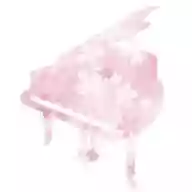[For Beginners] Recommended Ghibli Masterpieces You’ll Want to Play on the Piano
Studio Ghibli has produced numerous animated films that represent Japan.
Alongside their moving stories, many unforgettable songs have been born.
Not only the theme and insert songs, but also the background music that plays throughout the films is memorable, and many people may find themselves recalling the music together with iconic scenes—and perhaps wanting to try playing it on the piano at least once.
Many pieces from Studio Ghibli’s works are perfectly suited to the piano.
In this article, we introduce Ghibli pieces recommended for piano beginners.
Start your piano journey with your favorite song!
- [Disney] Playable even if you’ve just learned Do-Re-Mi! A selection of iconic songs from beloved Disney animations
- Disney Classics on Piano: A Curated Selection of Easy Pieces, Perfect for Recitals
- [Anisong] Easy for Piano Beginners! Recommended Practice Pieces
- [For Beginners] I Want to Play These on Piano! Recommended Anime Songs Compilation
- Recommended anime theme songs for children: timeless anime song classics you should listen to at least once.
- Pick up famous and popular anime songs! Along with piano solo
- [Piano × Vocaloid] A selection of recommended songs that are easy for beginners to play
- Disney songs to listen to at Christmas: a collection of classics that color the holiday season
- Songs from Castle in the Sky (Laputa): the theme song and insert songs.
- [Children's Song] Easy for Piano Beginners! Introducing Songs with Simple Chords
- You can instantly spot the most popular anime among kids! A collection of works that elementary schoolers are crazy about.
[For Beginners] Recommended Ghibli Masterpieces to Play on Piano (21–30)
Country RoadYoko Honna / Taffy Nivert / John Denver / Bill Danoff

“Country Roads” is popular not only among pianists but also beginners of various instruments like the flute and violin.
Many of you may want to be able to play its nostalgic, soothing melody on the piano.
Since the left hand simply keeps the rhythm within a narrow range, once you master the right hand’s rhythm and leaps, coordinating both hands will progress more smoothly than you might expect.
After you get a feel for hands-together playing using sheet music with fewer left-hand notes, actively challenge yourself with arrangements that add more rhythmic elements!
Nausicaä RequiemJoe Hisaishi

This piece, created by Joe Hisaishi, one of Japan’s leading composers, was used as an insert song in the film Nausicaä of the Valley of the Wind, specifically in the scene where a young Nausicaä appears.
Its distinctive melody is striking, and it is sung by Hisaishi’s daughter, Mai, whose pure voice imbues the entire film with deep emotion.
With a minimalist structure that conveys both melancholy and composure, the piece perfectly matches the film’s atmosphere.
It’s also recommended for those who want to try not only bright or beautiful piano pieces but also pieces with a slightly unique mood.
[For Beginners] Recommended Ghibli Masterpieces to Play on Piano (31–40)
Ashitaka and SanJoe Hisaishi

A classic piece by Joe Hisaishi, one of Japan’s most renowned composers, serves as an insert song in the film Princess Mononoke.
Released in July 1997, the film features Hisaishi’s delicate melodies that portray the relationship between nature and humanity.
Beginning with a gentle piano and gradually unfolding into a grand orchestral arrangement, the piece vividly expresses the film’s themes of coexistence with nature and human conflict through music.
Its lyrical melody also symbolizes the complex relationship between the protagonist, Ashitaka, and the heroine, San, resonating deeply with listeners.
Why not try playing this piece on the piano, which beautifully colors the film’s climactic scenes?
Message of RougeYumi Matsutoya

Yumi Matsutoya, who has been active across a wide range of genres from Showa-era kayōkyoku to New Music.
One of Matsutoya’s signature songs is “Message of Rouge.” It was chosen as the opening theme for Studio Ghibli’s 1989 film Kiki’s Delivery Service and is loved by people of all ages.
The contrast between its lively doo-wop-style melody and lyrics centered on infidelity is striking.
The female protagonist deftly expresses her anger toward her lover, lingering attachment, and mischievous streak.
Since the tempo is fast, first practice playing slowly with an accurate rhythm—like in the video introduced here—then gradually increase the tempo.
Once you can play it on the piano, you’re sure to have a great time!
Princess MononokeYoshikazu Mera / Joe Hisaishi

Many people must have been captivated by Yoshikazu Mera’s enveloping singing voice and the dreamlike sound! The main theme of the film Princess Mononoke, memorable for its beautiful melody, is easy to play on the piano thanks to its relaxed tempo and uncomplicated rhythm.
To recreate the melancholy mood of the original, the key is to play the lower-register phrases softly and gradually increase the volume as the range rises to build intensity.
By focusing on expression, you can achieve a highly polished performance even with fewer notes.
contrailYumi Matsutoya

Yumi Arai’s classic “Hikoukigumo” is also well known as the theme song for the film The Wind Rises.
It is said to have been written after the death of one of Arai’s elementary school classmates, who had been battling a serious illness.
Rather than dwelling on sorrow, the melody conveys a forward-looking hope, as if wishing for happiness in heaven.
Its range is fairly wide and the rhythm somewhat intricate.
However, since the accompaniment keeps repeating the same rhythm within a narrow range, once you’ve mastered the right hand, playing with both hands is within reach.
Don’t just read the score—try humming the tune as you go to internalize the rhythm.
strollAzumi Inoue / Joe Hisaishi

A perfect piece for piano beginners that can be played without moving the left-hand position! It’s also very popular among children learning piano and is often chosen for recitals.
The standout feature of “Sanpo” is its bouncy, skipping rhythm! Practice with an emphasis on playing rhythmically so you can express the excitement of setting out on an adventure.
If you play it cheerfully and have fun, you’re already more than halfway there! Once you’ve mastered the right hand, try tackling an arrangement that adds rhythmic elements to the left hand.






